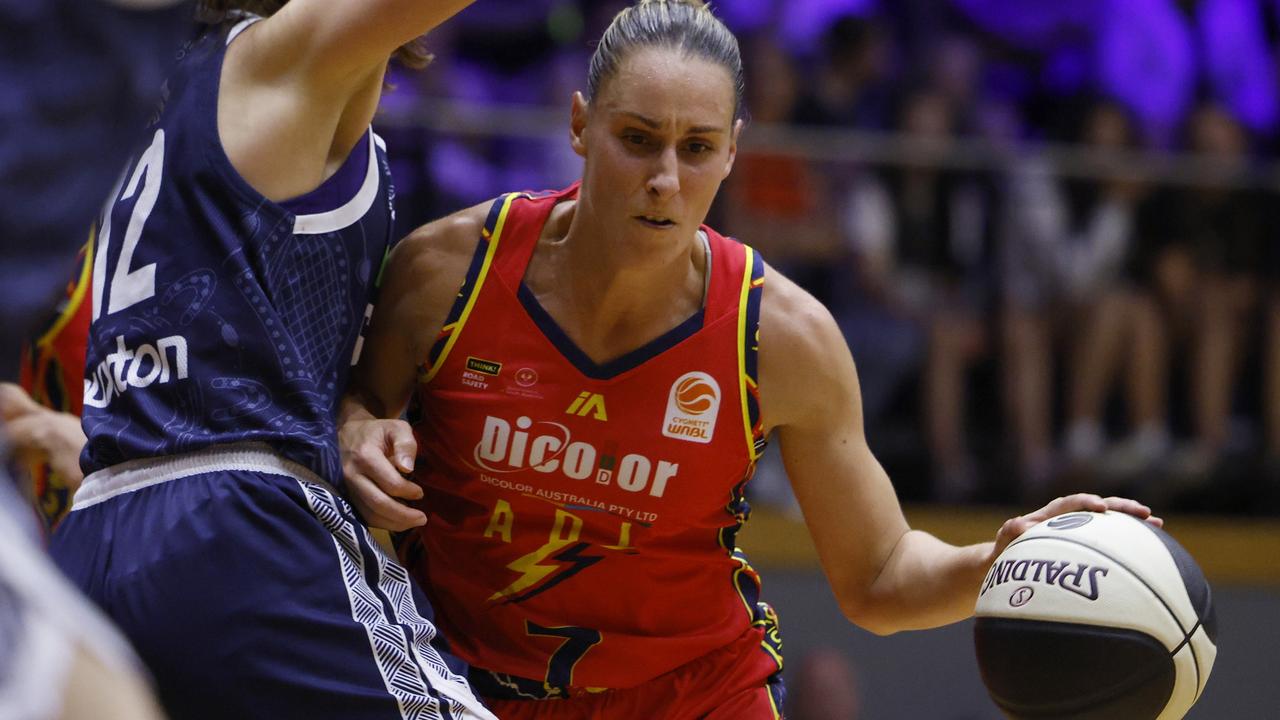Insight: Aussie sport’s concussion ‘poster girl’ Maddy Proud on the taboo topic and her greatest fear
Men’s sport is making great progress in taking concussion seriously. Why is female sport lagging behind? Read Diamonds star Maddy Proud’s exclusive column.
CODE Insight
Don't miss out on the headlines from CODE Insight. Followed categories will be added to My News.
Concussion in both men and women’s sport has been a taboo subject for too long.
I only truly realised the full impact after watching the movie Concussion and learning about the disease Chronic Traumatic Encephalopathy (CTE).
Increased understanding of CTE has led many male contact sports to put more of an emphasis on the protocols and treatment of concussions.
It used to be (and in some cases still is) something players would try and hide, often trying to ‘tough’ it out so as not to miss a game or let their teammates down.
While we’ve seen great progress in the men’s games, it’s time for female sport to catch up.
The female brain is different to the male brain and therefore needs to be treated differently.
But we can’t understand to what degree until it becomes a priority and more research is done.
I think as women we sometimes don’t want to speak up about our experiences, particularly regarding concussion.

I’m not sure if it’s because we don’t want to put a focus on what could be perceived as the ‘negative’ aspects of the sport, or if it’s because we don’t like any attention on us as individuals.
But when I was asked to write this article, it dawned on me that somehow, inadvertently, I’d become the ‘poster girl’ for concussions in netball.
The truth is, I’ve actually only ever had one ‘official’ concussion.
This is where the complexity comes into it, with varying symptoms leading to inconclusive diagnoses.
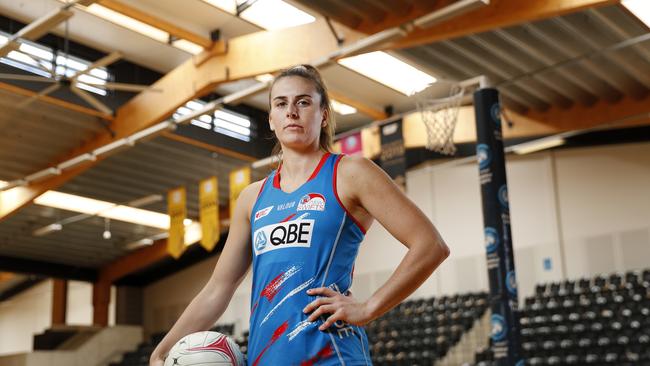
While both were still treated as concussions and the same precautions were taken, had I not had this so-called ‘history’ of concussions, I might not have been so lucky.
Even this year I had to come off for an assessment after a collision. But was that only because I’ve been ‘known’ to have had concussions before, or because of the incident itself?
That’s where having enough research to create procedures that adequately protect all players, not just those who have a known history of the injuries, comes into play.
If more players speak up about their experiences, this will hopefully lead to more data for research and a greater emphasis on education and awareness about concussion at all levels of netball.
WHAT CONCUSSION IS REALLY LIKE
I always pictured concussions like you saw them in movies or on TV; some huge hit that results in the unlucky recipient laying on the ground unconscious. But apart from my most recent experience, which involved my teammate’s elbow, my chin and the floor, the other two have been more innocuous.
The hit while I was playing for the Diamonds is a bit of a blur; I remember the initial impact and knowing something wasn’t right as I lay on the floor.
My symptoms were brought on most intensely when doing a test after the match in which I had to follow the doctors’ finger movements with my eyes.
The moment my eyes had to move side to side, I thought I was going to throw up. From then, it was as if I was a ‘fog’ for the next few days.
People who know me well could tell I was a little more distant and not as engaged in conversation as I usually was.
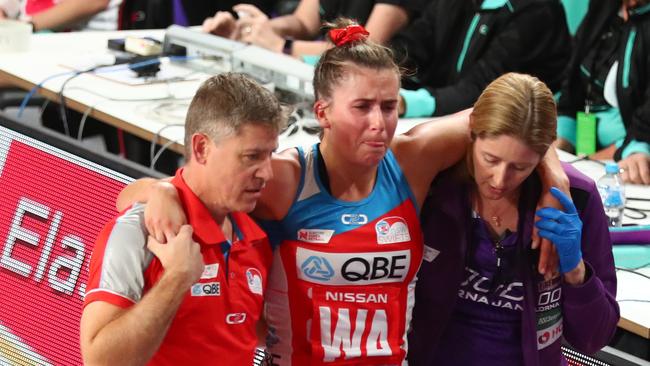
I spent a few days in bed, resting and sleeping until suddenly it was if a switch was flicked and everything became clear again.
Earlier I spoke about vasovagal, which is essentially the act of fainting after a stressful event. This occurred at a training session where I knocked my chin on the shoulder of one of my teammates, biting my tongue so bad it bled and experiencing some whiplash as well.
I initially laughed it off, thinking I was fine and only going to the sidelines because my mouth was full of blood.
But then the nausea and light-headedness came on and an ambulance was called. I became quite emotional, getting panicky and wanting to “call my mum” so I could speak to her.
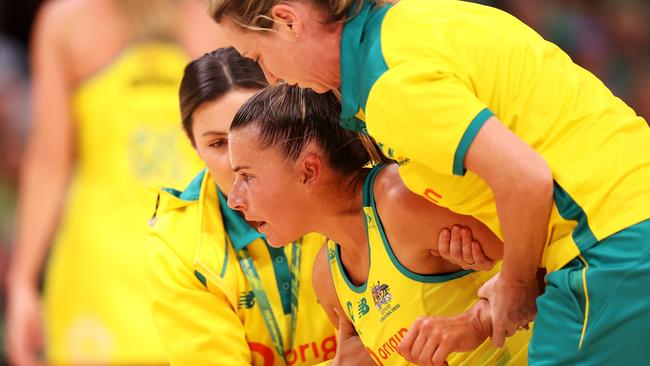
While these symptoms are synonymous with concussion, they are also signs of vasovagal, hence the mixed diagnoses.
Sometimes the biggest head collisions that look the worst can leave the person totally fine, whereas a simple knock to the wrong spot at the wrong time can lead to a bad concussion. That’s why I now take an extra minute to compose myself when I suffer any sort of head-knock, wanting to take the time to make sure it’s not a concussion and the symptoms aren’t delayed.
AWARENESS IS KEY
While concussion is still a relatively new topic of conversation in women’s sport, and in particular netball, head collisions have been a part of our sport for decades.
It might not be as prevalent as it is in those sports where tackling is allowed and players run at each other head on at full speed, but it’s still cause for concern.
I’ve been very fortunate to have had positive outcomes from my concussion ‘experiences’.
I’ve only ever had to miss the then-required one week and haven’t had any lasting issues. But concussions are complicated. They don’t present the same in every situation, even within the same person, and different people will show different symptoms at different times.
It’s not as simple as diagnosing a torn ACL or broken arm; there are many more layers to diagnosing and treating this injury.
And that’s why research, resources and education are, in my opinion, key to ensuring we protect our most vital body part – our brain.
At the elite level we are incredibly fortunate to have so many medical experts and
support staff surrounding us to ensure we are treated with great caution after a
head injury.
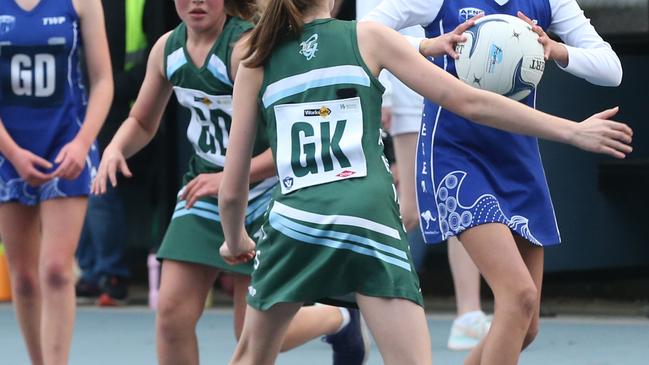
But what about at the grassroots or amateur level?
Kids playing outdoors in the ever-changing weather, on hard surfaces, are more at risk than
those of us playing on sprung floors under the watchful eye of medical professionals.
I worry for the girl playing on court 16 on a Saturday morning that suffers a concussion, but no one knows about it, or even worse, no one knows what to do about it.
Just like any disease or injury, awareness is key. And the more we start talking about these topics that might make people feel uncomfortable, the better.
But that doesn’t mean it’s going to stop me from throwing myself at any loose ball on the court.
More Coverage
Originally published as Insight: Aussie sport’s concussion ‘poster girl’ Maddy Proud on the taboo topic and her greatest fear




